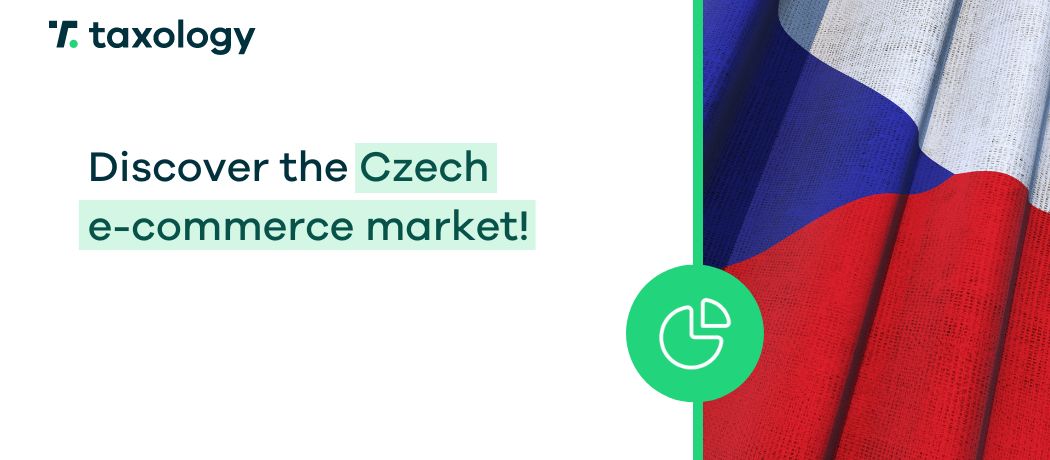France is one of the largest and wealthiest countries in Europe, making it an extremely attractive market for expansion for many entrepreneurs in the e-commerce sector. However, like any other […]
Read in: 5 minDiscover the Czech e-commerce market!
- Last update:
- Published: 12.03.2024
- Read in: 5 min
The e-commerce sector is constantly developing, significantly boosted by the pandemic, during which many markets recorded peak values. The Czech Republic was no exception and is currently on an upward trend, with forecasts suggesting this will continue for at least a few more years.
The attractiveness of the market for foreign entrepreneurs is increasing, including for Polish sellers, who might also be encouraged by last year’s debut of the Allegro platform in the Czech Republic.
Therefore, if you want to learn about the specifics of the e-commerce market in this country, we encourage you to read this article!
Demographic data
The population of the Czech Republic in 2022 was 10.83 million people, and interestingly, forecasts up to 2024 indicated an upward trend.
Moreover, in 2023, as much as 72.5% of the population made online purchases, with 62.9% of them being adults.
Average monthly salary in the Czech Republic
Although the Czech economy is far from the German one mentioned in our article about the German e-commerce market, it still ranked 13th among European countries in terms of GDP in 2022.
This corresponded to an average monthly salary of 40,317 CZK in 2022, which is approximately 1,590.08 EUR.
Access to mobile devices
Furthermore, over 8 million citizens owned smartphones in the Czech Republic in 2022, and as much as 92% of the population had internet access in 2023.
Payment methods
In 2021, the most popular payment method in the Czech Republic during online shopping was cash on delivery, chosen by 38% of buyers. Bank transfers were preferred by 37%, card payments by 14%, and e-wallets by 7%.
Major courier companies in the Czech Republic
The most preferred delivery providers in the Czech Republic in 2022 included:
- Zasilkovna (Packeta), used by 31.4% of people;
- Ceska Posta, with a result of 19.5%;
- PPL, 13.5%;
- DPD, 13.1%;
- GLS, 11.6%.
Value of the Czech e-commerce market
The Czech e-commerce market was ranked 37th in terms of value and recorded turnovers of 223 billion CZK in 2021, which is approximately 8.781 billion euros. However, this figure fell the following year to 197 billion CZK, which is equivalent to about 7.757 billion euros.
Interestingly, forecasts for the Czech market indicate that after the mentioned decline in 2022, it will regularly gain in value at least until 2028, where its estimated value will reach 9.81 billion US dollars (about 9.04 billion euros).
Most popular marketplace platforms in the Czech Republic
Without a doubt, the two most popular marketplace platforms in the Czech Republic are bazos.cz and alza.cz. The former recorded 21.4 million visits in January 2024, with an average browsing time of 8 minutes and 44 seconds.
In contrast, Alza was visited by 20.3 million users, who, on average, spent there 6 minutes and 27 seconds.
Furthermore, popular marketplace platforms also include sbazar.cz, which had 8.3 million views in January 2024 and an average visit time of 6 minutes and 28 seconds, and aukro.cz, which recorded a very similar number of views, with the average time spent on the platform nearly 10 minutes.
Also, two Chinese marketplace platforms attracting millions of customers are Temu and Aliexpress.

Need help with VAT or e-commerce accounting?
Contact us and our specialists will take care of the rest, i.e. accounting in e-commerce or aspects of VAT and VAT OSS – registration, settlements and declarations!
Schedule a consultationProduct categories
The most popular category of products that consumers in the Czech e-commerce industry reach for is clothing and footwear, purchased by 38.7% of Czechs in 2023.
The second most popular category was movies and music, reached for by 36.3% of buyers.
What to remember before expanding to the Czech Market?
When entering the Czech e-commerce market, remember to adapt your online store or marketplace offers to this market.
This includes providing a Czech phone number for customer contact and support in this language, establishing a Czech address for returns, and adapting to transactions in Czech crowns by setting up a foreign currency account and providing customers with the ability to pay in such currency.
It’s also essential that Czech account numbers have a different format – xxxxxx-xxxxxxxxxx/xxxx. The first six characters are the so-called prefix, followed by a hyphen, account number, slash, and the country code. Therefore, when creating a return form, ensure that the account number in such a format is accepted.
Online Store Policies
Every country also has its regulations, which require entrepreneurs to have a properly constructed online store policy. However, the Association of E-commerce in the Czech Republic (APEK) can help, offering an updated template in compliance with national and European law (including the Omnibus Directive), available after paying a membership fee.
SEO
When entering the Czech market with your own online store, consider not only positioning in Google, which is indeed the most visited website in the Czech Republic, but also in Seznam – a local Czech search engine established in 1996. It’s so popular that it surpasses even Facebook and YouTube.
Therefore, ensure SEO is also in Czech to make your shop visible in Seznam.
Moreover, when optimizing in Czech, remember that the content will be partially understandable to Slovak audiences. However, if you aim to reach customers in Slovakia first, create content in their language since positioning in Czech to establish your position in Slovakia might adversely affect your shop’s image.
Calendar Configuration
Before expanding to the Czech Republic or any other market, consider the national holidays and days off. These will differ in the Czech Republic, Poland, or Slovakia, so marking the appropriate dates in the calendar is essential to conduct not only marketing actions but also sales.
Examples of Czech holidays include:
May 8 – Victory Day
July 5 – Day of the Slavic Apostles Cyril and Methodius
July 6 – Day of the Burning of Jan Hus
October 28 – Day of the Independent Czechoslovak State
Tax obligations associated with expansion to the Czech Market
Entering a new market requires awareness of tax obligations associated with the process.
This also applies to the Czech Republic in several situations, including exceeding the sales threshold or storing goods in the country and shipping them to private consumers from other states. In these cases, VAT registration in the Czech Republic or using the VAT OSS procedure is necessary, which sometimes avoids the need for a Czech VAT number.
If you’re looking for more information, check out our article about VAT in the Czech Republic.
Czech e-commerce market – summary
The Czech market is undoubtedly an interesting direction for development for Polish entrepreneurs. Not only is it a neighboring country to Poland, meaning easier access to logistic solutions and skilled labor, such as translators.
Moreover, forecasts indicate an increase in the market’s value at least until 2028, and a significant facilitation for Polish sellers is last year’s debut of the Allegro platform in our southern neighbors’ country.
However, keep in mind that expanding to a new market also involves tax-related duties. So, if you plan to start operating in another EU country or the UK and need support with VAT-related issues, or VAT OSS – registrations, settlements, or declarations – schedule a consultation, and our VAT Compliance specialists will take care of the rest! We invite you to schedule a consultation.





